
We camped by Butler Wash, west of Bluff, Utah, October 16-18, 2020. The goal was to climb on the slick rock of Comb Ridge, on the other side of the Wash.
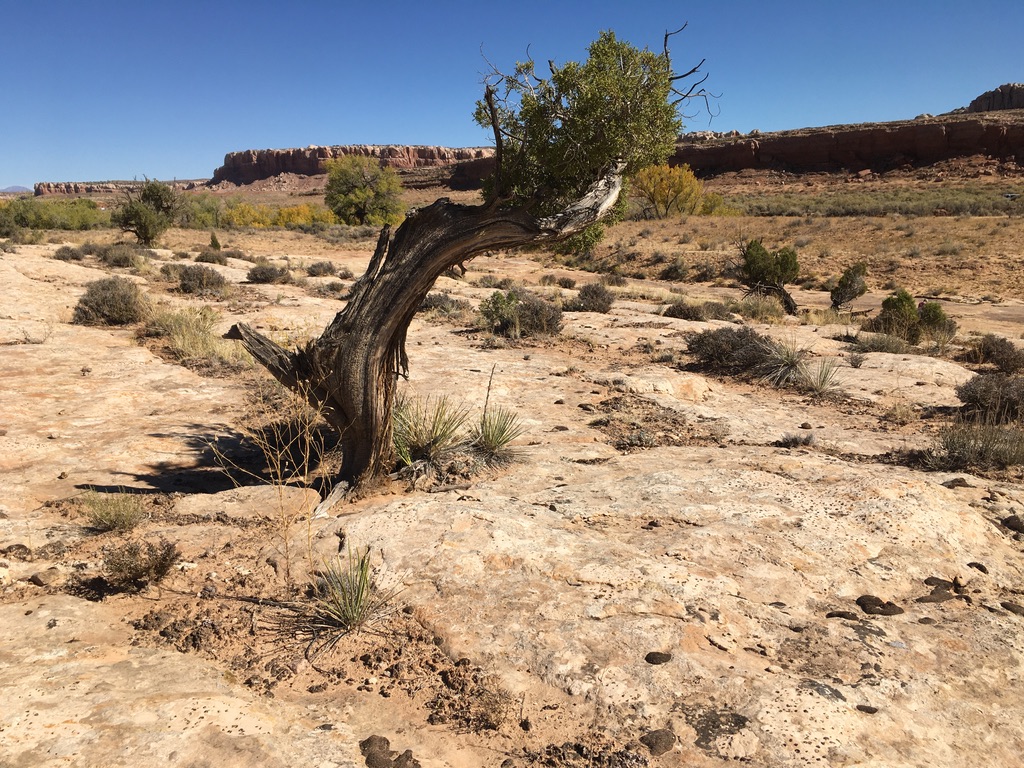
I am amazed at how life exists even in very harsh conditions. There is evidence that this area is in a state of severe drought, yet some life persists.

Although they may not be as exciting as plants, the mosses and lichens are colorful. We try to avoid walking on the cryptobiotic soil, which helps to hold the water and binds the soil together–and even make new soil.
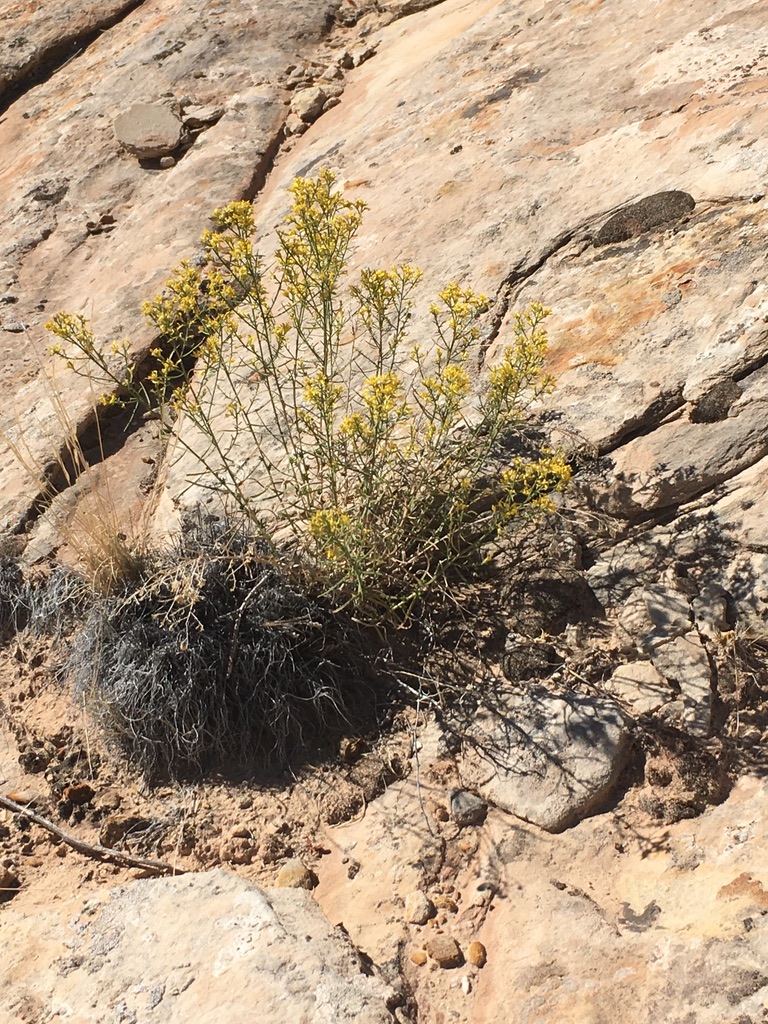
I have been intrigued by these little pothole gardens which contain small samples of life.
There are limits to what can live without water. The people who lived in this area, the Ancestral Puebloans (formerly called Anasazi) left during a severe drought and moved south, along the Rio Grande.Their numbers had risen during moist years to a level that the land couldn’t support them during a drought.

Some of the potholes are larger and support multiple species of plants. The larger ones may even have vertebrate animals living in them!
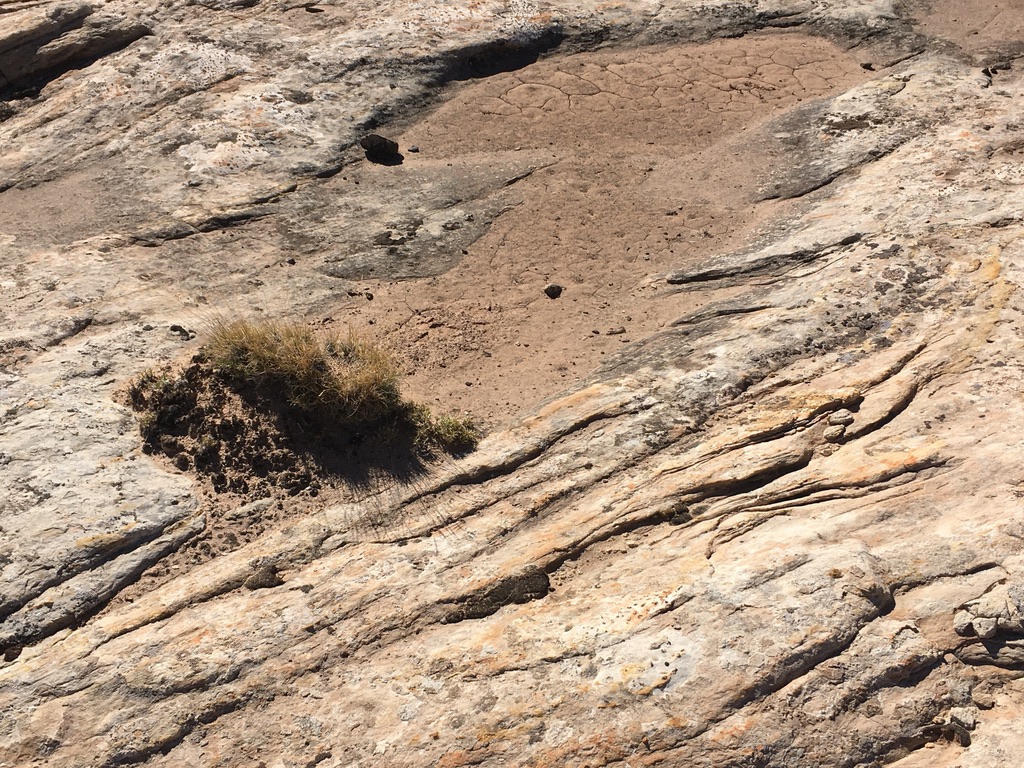
Many potholes are barren. The rock slopes down to the left in this picture; the little surviving life lives where the water lasts the longest.
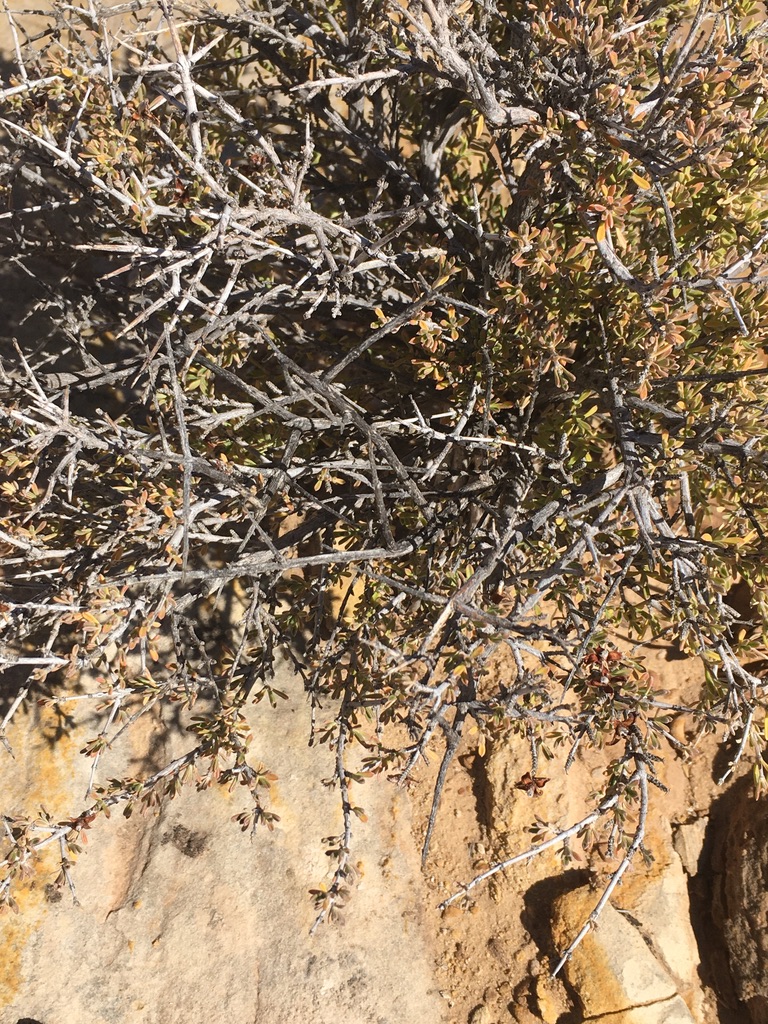
It has been a long time since the last rain. We’re amazed that anything is still alive; some of the plants are barely holding on in the drought.
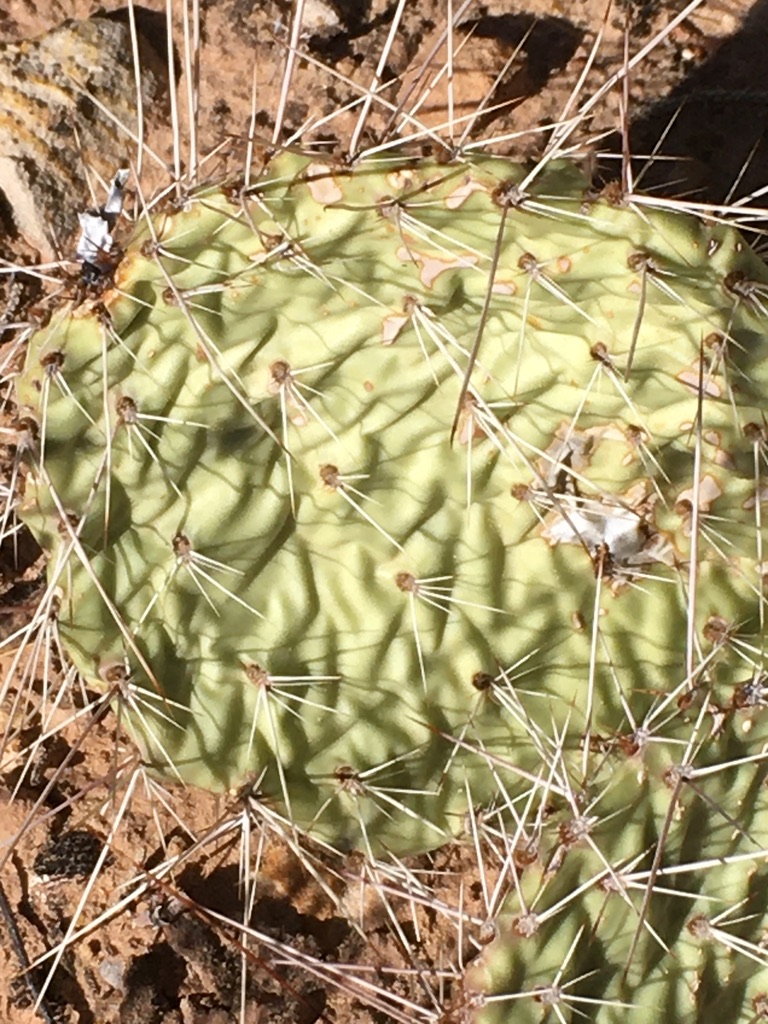
Even the prickly pear cactus is shriveled.
A recent article states that human activity is responsible for about half of the drought. For more information, see below.

Although most of the colors are muted deserty, there are a few bright spots.
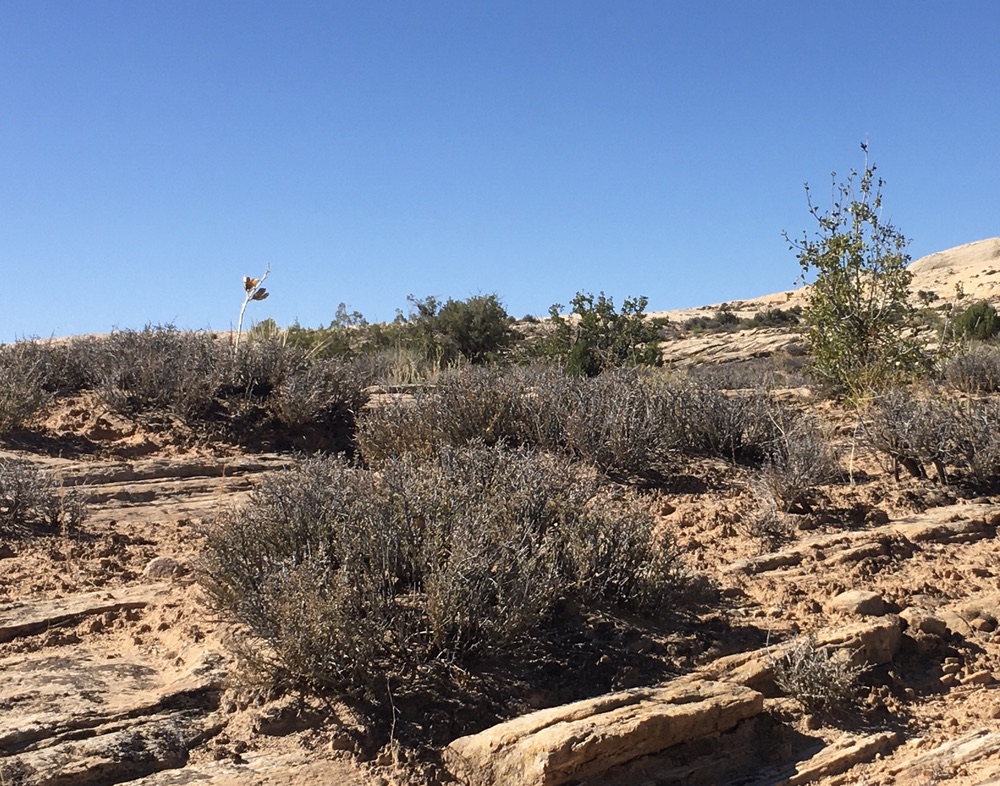
Having spread its seed, a dried yucca stands on the horizon.
A “megadrought” is defined as a drought lasting 20 years or longer. For comparison, the Dust Bowl of the midwest, although it was terrible, did not qualify as a megadrought.
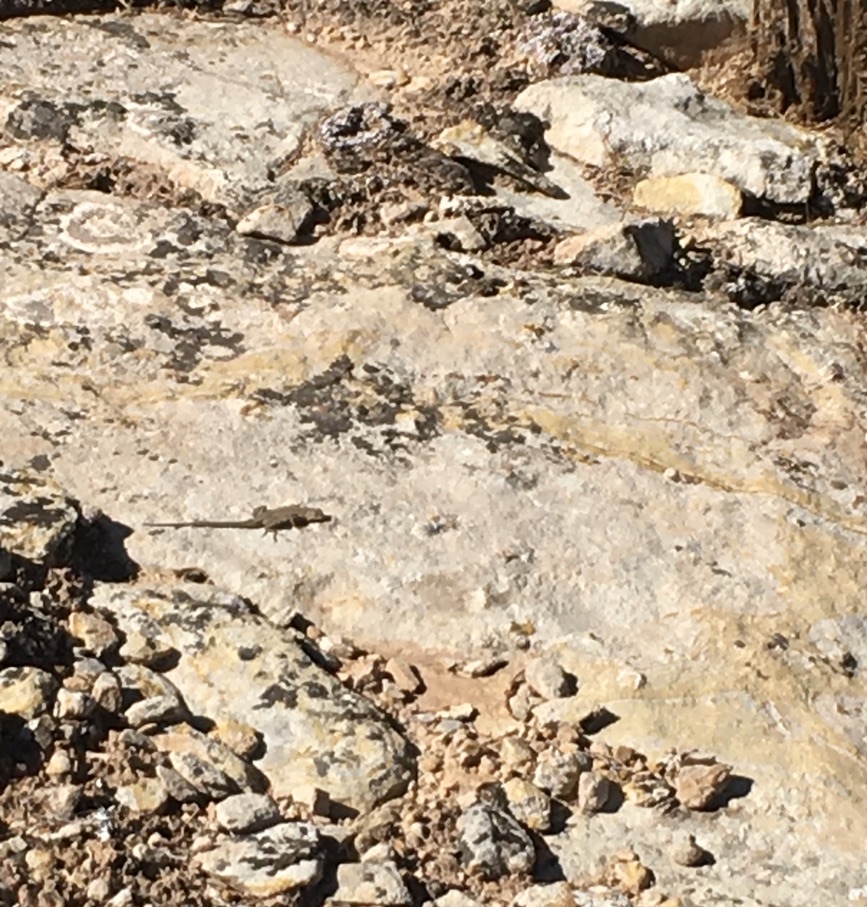
There isn’t much sign of animal life; we strain to find as much as we can. Gail sees a rabbit, but it’s gone before I turn.
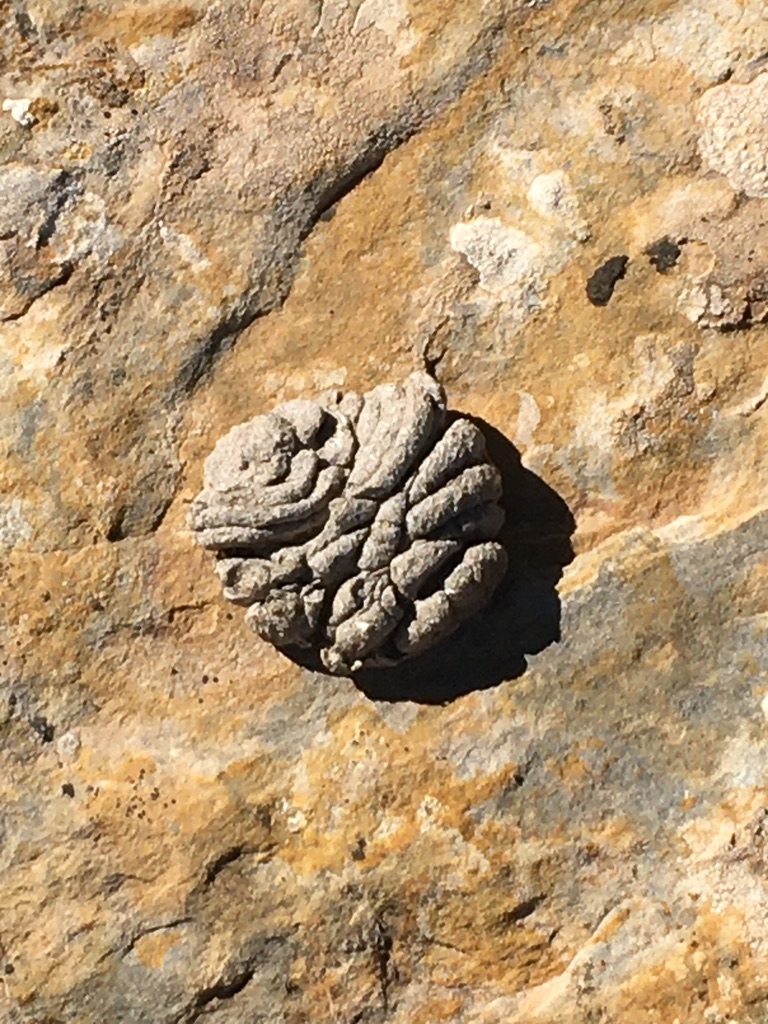
We debate if this comes from big horn sheep or cow,
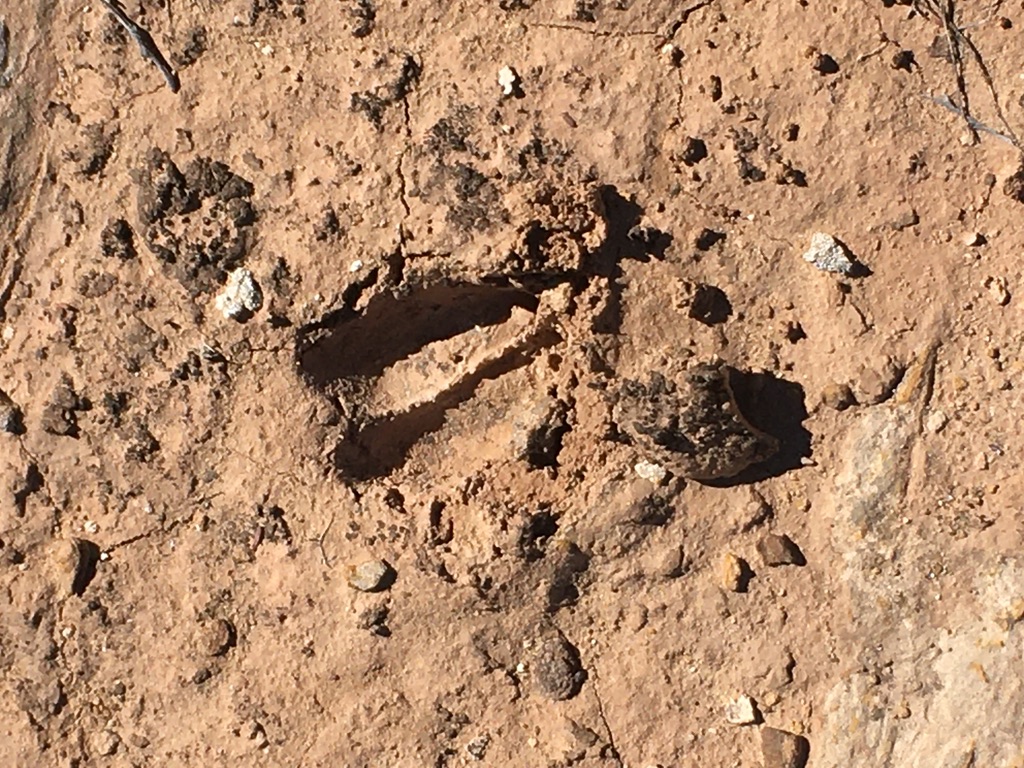
and wonder if this is deer or sheep, but saw neither animal.
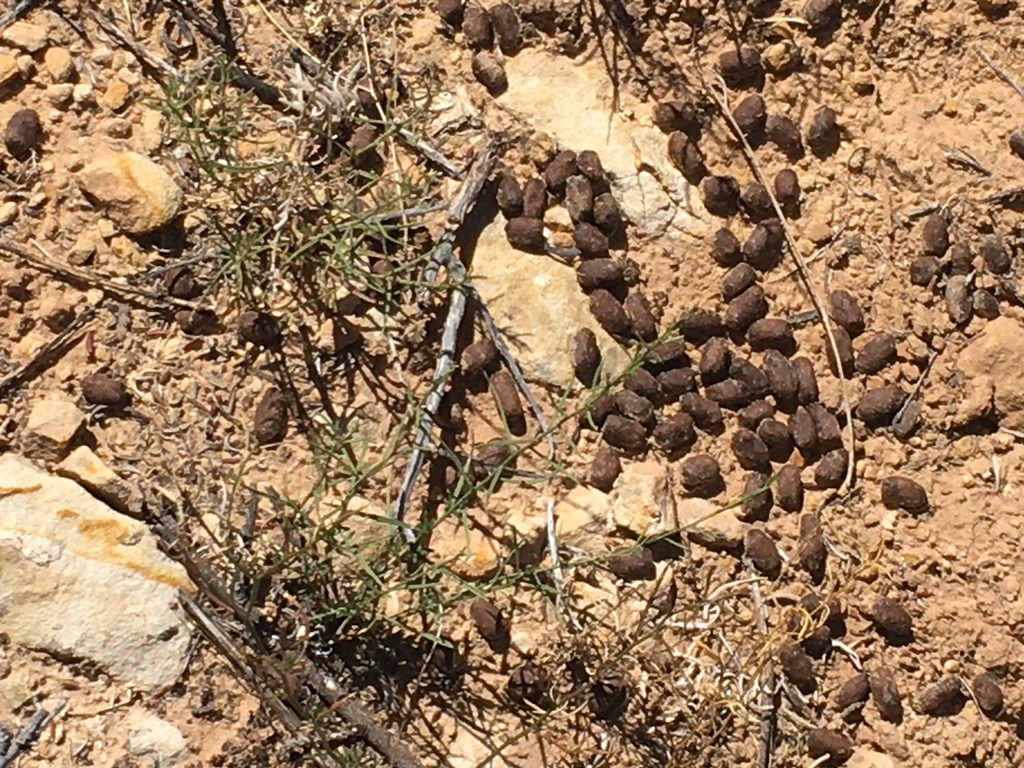
However, we found deer skat in one of the larger pothole gardens.
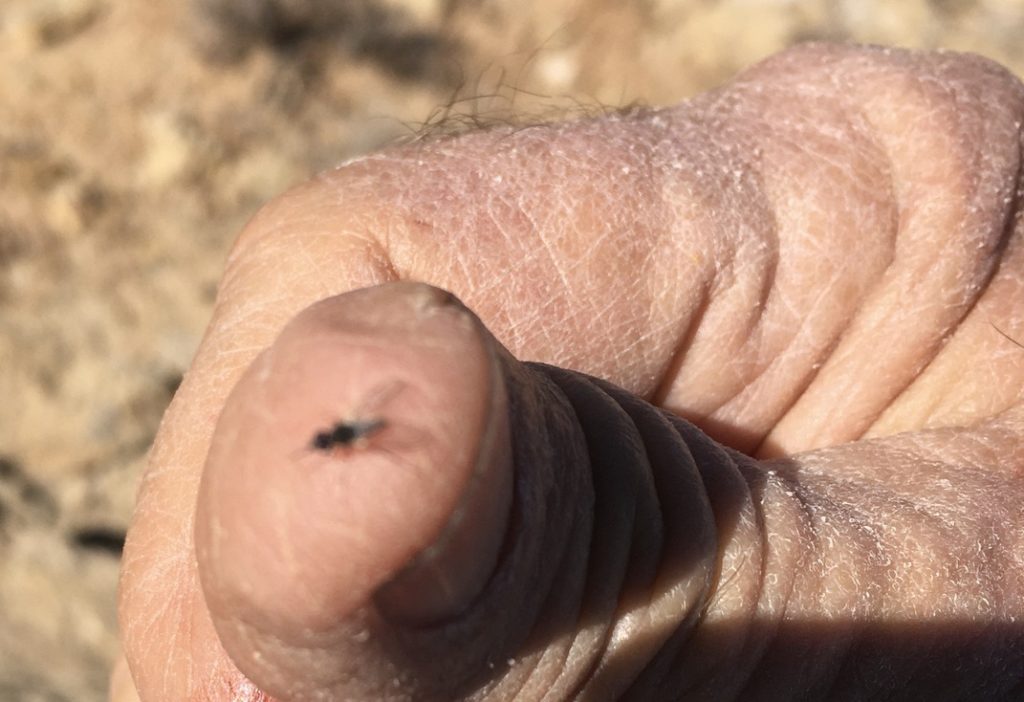
This tiny fly rested on my thumb after a lizard lunged at it, but missed.

We are amazed to see water in a series of potholes down low. Ty, our old black dog, takes a dip and a drink. The water came down from the rock above when it rained and was collected in a series of little pools. The last rain was September 7th; we were there 40 days since that rain.

www.drought.gov is a convenient source of information. This map shows the Four Corners Region; the blue pointer aims at Bluff. Rose color is D3 (Extreme Drought) while the brown is D4 (Exceptional Drought–the driest level). Bluff is D3 while the Durango area is D4.
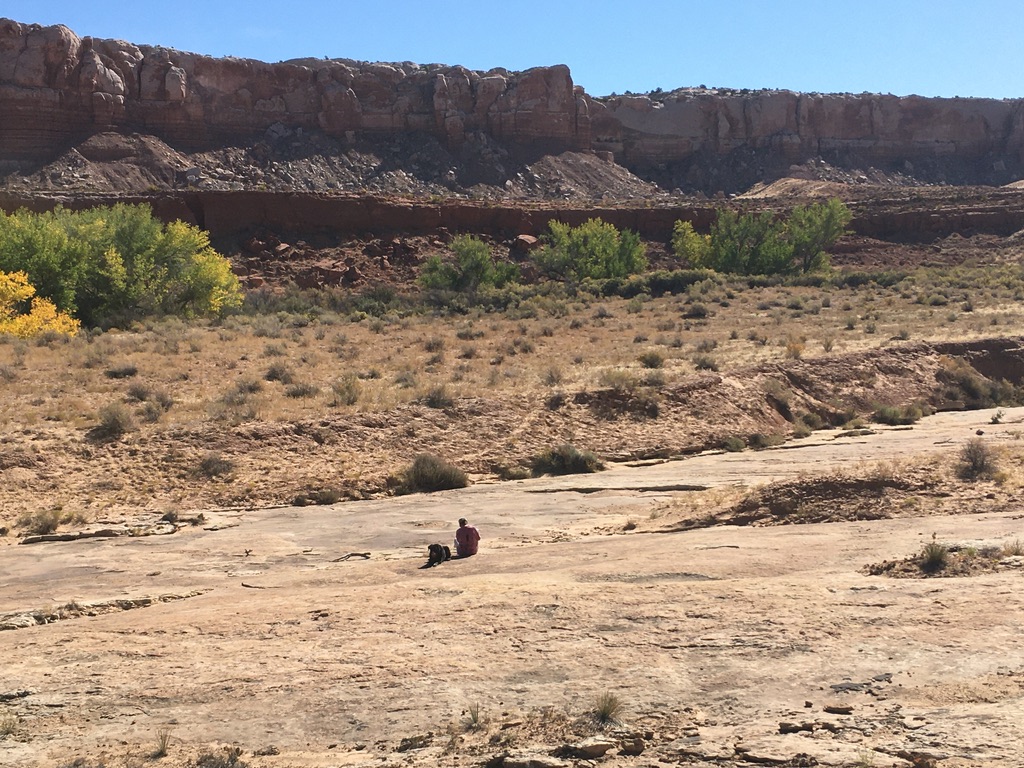
When I asked Jim Hook of Recapture Lodge (in Bluff) when the last rain before October 17th was, he wrote: “The last rain I recorded was on September 7 when we received 0.5 inch. September ends the water year so we ended the last 12 months with 4.57 inches of moisture. Average over the last 100 years is 7.76 inches which isn’t much but it means Bluff only received 59% of “Normal” precip. October actually is our wettest month 🙁 “
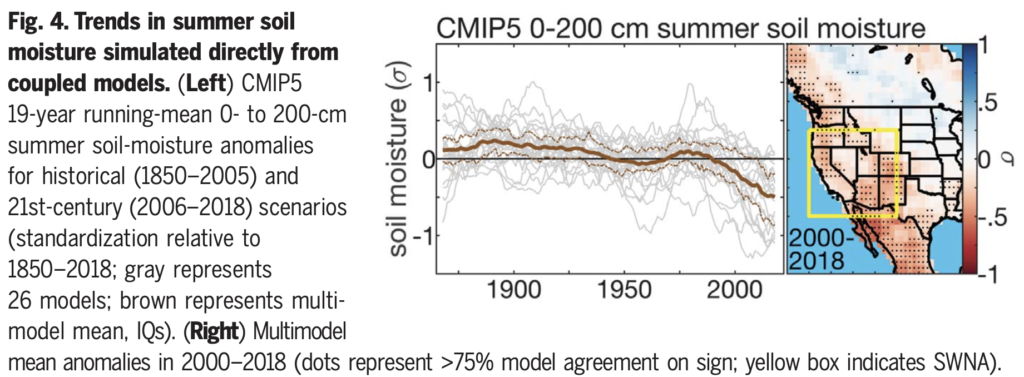
The figure above is from the article “Large contribution from anthropogenic warming to an Emerging North American megadrought” by Williams et al., Science, May 2020.
The graph shows soil moisture with the straight line being average, and the red line departure from average, by year. The yellow square on the map is the area of interest–southwest North America. Brown shading denotes the local degree of drought.
The summary of this article states: “Anthropogenic trends in temperature, relative humidity and precipitation from 31 climate models account for 47%… of the 2000-2018 drought severity….” That means that human activity is responsible for about half of the drought that we are facing.
Thank you for reading. Although I have written about drought in my monthly essays, our visit to Comb Ridge made the current drought visible in a way that I wanted to share.
Richard
P.S.: While this photoessay talks about drought in an abstract way, there is an excellent article that speaks to the problems that the drought is causing people, animals and plants: https://navajotimes.com/ae/community/climate-change-video-combines-science-elders-views/ I strongly recommend the video that is embedded in the article.
© Richard Grossman MD, 2020